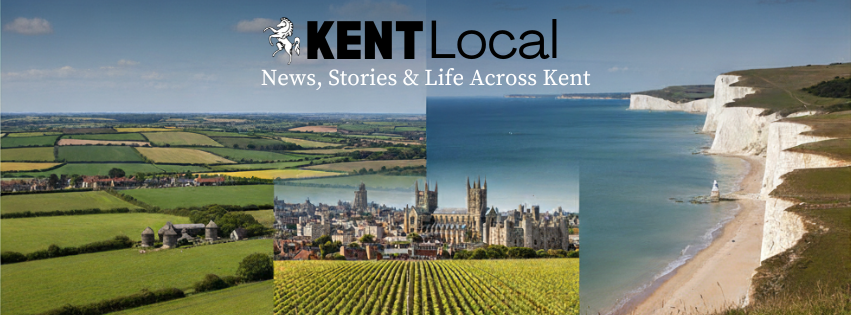A Major Shift: Understanding Local Government Reorganisation in Kent
What is a Unitary Council, and How Does it Differ from Our Current System?
Kent currently operates a two-tier local government system. This involves Kent County Council handling services such as education, social care, and highways, while the twelve district and borough councils manage housing, planning, waste collection, and local amenities. A unitary council combines these responsibilities into a single authority covering all services in its area. This model seeks to simplify governance, improve coordination, and potentially reduce administrative costs.
The Drivers Behind the Reform: Why Change Now?
The push for local government reorganisation comes from the Department for Levelling Up, Housing & Communities (DLUHC), which has encouraged councils across England to explore unitary options. Key reasons include improving service delivery, achieving financial efficiencies, strengthening local accountability, and providing clearer decision-making paths. Kent’s councils are responding by submitting proposals for possible new unitary structures to replace the existing two-tier system.
The Competing Visions: A Look at the Different Unitary Council Models Proposed
The ‘Three-Unitary’ Model: Regional Structures for North, West, and East Kent
Proposed Groupings and Their Geographic Scope
This model suggests creating three new unitary authorities: one covering North Kent, including Dartford, Gravesham, and Medway; a West Kent authority combining Tunbridge Wells, Tonbridge & Malling, and Sevenoaks; and an East Kent section made up of Ashford, Canterbury, Dover, Folkestone & Hythe, Maidstone, Swale, and Thanet. It aims to balance local connections and economies of scale but would involve larger administrative areas than current districts.
The ‘Four-Unitary’ Model: Balancing Local Identity and Efficiency
Exploring the Different Four-Unitary Groupings
The four-unitary proposals vary in their groupings but generally seek a middle ground between delivering services at scale and retaining local community identity. Some variations focus on creating authorities that align with natural regional and community boundaries, allowing for closer resident engagement while aiming to maintain operational efficiency.
Individual Council Proposals: Diverse Approaches from Across Kent
Medway’s Specific Four-Unitary Proposal with Boundary Adjustments
Medway Council, which currently operates as a single unitary authority, has proposed an adjusted four-unitary model that includes boundary changes intended to reflect population growth and community ties, seeking to improve service coordination in its area.
Gravesham and Dartford’s Joint Five-Unitary Framework
Gravesham and Dartford councils have put forward a joint proposal to create five smaller unitary authorities, aiming to provide more localised governance. This model focuses on community identity and locally tailored service delivery, though it may involve higher administrative costs due to the increased number of councils.
Kent County Council’s Single Unitary Vision: One Council for Kent with Area Committees
KCC proposes creating one single unitary authority to cover the entire county, accompanied by area committees to maintain local input into decisions. This model intends to deliver consistent countywide services, reduce duplication, and maximise financial savings through economies of scale.
What This Could Mean for Residents and Services Across Kent
Impact on Service Delivery: From Waste Collection to Social Care
Unitary councils would integrate services currently split between county and district levels. This could simplify access to services such as waste collection, education, social care, housing, and planning permissions. Proponents suggest this integration may lead to faster decision-making and better coordination, while critics raise concerns about potential service disruption during transition periods.
Local Representation, Democracy, and Community Voice
Consolidation into fewer authorities may affect how residents engage with their local government. Larger units might reduce the proximity of elected representatives, raising concerns about community identity and democratic accountability. Models including area committees or smaller council units seek to address these concerns by maintaining local voices within a larger structure.
The Financial Picture: Value for Money, Efficiency, and Council Tax
One goal of reorganisation is to generate savings through reduced duplication and streamlined management. Independent advisers such as KPMG have been involved in assessing business cases for each proposal to evaluate long-term financial sustainability. How these changes might affect council tax levels remains uncertain, but balancing cost-efficiency with quality services is a central consideration for all proposals.
Addressing Public Priorities: Quality of Service, Speed, and Simplicity
Previous public engagement highlighted residents’ priorities for easily accessible, high-quality services delivered promptly. The proposed unitary councils aim to respond to these concerns by offering clearer points of contact and uniform standards across areas. The complexity of restructuring means residents may experience some adjustment during transition but are encouraged to participate in consultations to influence outcomes.
The Path Ahead: Key Dates and How to Get Involved
From Draft Business Cases to Government Review
In early 2024, Kent’s councils submitted draft business cases detailing their preferred models and expected impacts. These documents are now under review by the DLUHC, which will consider the proposals in the context of national policies and local needs.
The Upcoming Public Consultation: Your Opportunity to Provide Feedback
A formal public consultation is scheduled to begin soon, offering residents, businesses, and community groups the chance to learn more and comment on the proposed unitary council options. Details will be available on council websites and through local media. Participation is vital to ensure diverse views are considered before final decisions are made.
What Happens Next? Awaiting the Final Government Decision
Following consultation and government assessment, a final decision on Kent and Medway’s local government structure is expected in late 2024. Implementation would then occur over the next few years, with the aim of a smooth transition to the chosen model that safeguards service continuity.
Shaping Tomorrow’s Kent: An Ongoing Conversation on Local Governance
The future of local government in Kent and Medway will have lasting effects on how services are delivered, local democracy operates, and community needs are met. Keeping informed and involved is essential. Kent residents, businesses, and organisations are encouraged to review proposals, attend information sessions, and take part in the consultation to help shape governance that best serves the county’s diverse communities.




